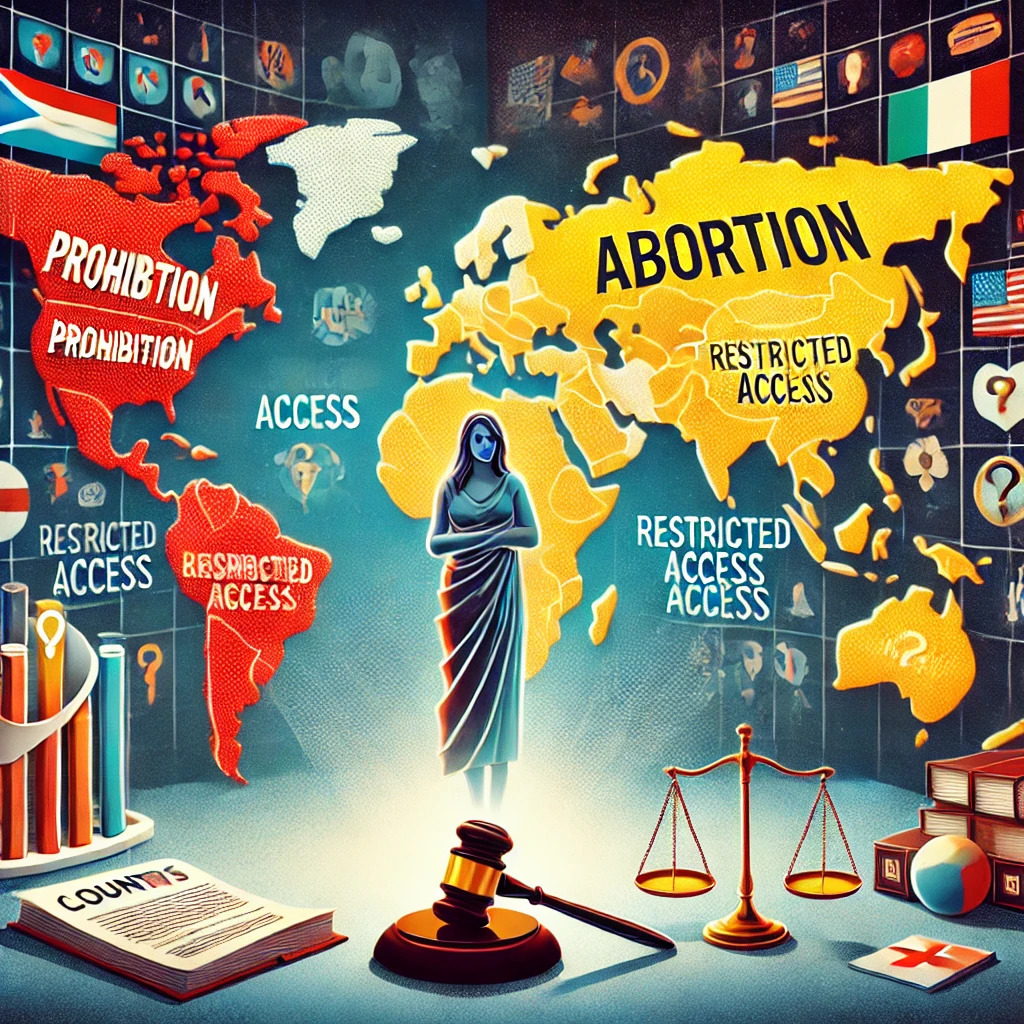View News
Abortion-An-International-Overview-and-Financial-Consequences

|
Abortion: An International Overview of its Legal Status and Financial Consequences ~ Sura Anjana Srimayi INTRODUCTIONAbortion, defined as the termination of pregnancy through the destruction or evacuation of an embryo or fetus, is a topic deeply embedded in legal, ethical, and economic discussions worldwide. The regulation of abortion varies significantly across countries, reflecting the diverse cultural, religious, and political landscapes that influence national policies. This article aims to provide an international overview of abortion laws, focusing on global trends, India's legal framework, and the economic consequences associated with abortion access and restrictions. Legal Implications of Abortion: A Global OverviewClassification of Abortion LawsAbortion laws worldwide fall into three primary categories:
Global TrendsOver the past few decades, there has been a significant shift toward the liberalization of abortion laws. Numerous nations have expanded legal grounds for abortion, recognizing its impact on public health, gender equality, and reproductive rights. However, access remains a challenge, particularly in developing regions where restrictive laws and inadequate healthcare infrastructure hinder safe abortion services. Legal Framework of Abortion in IndiaIndia’s abortion laws are primarily governed by the Medical Termination of Pregnancy (MTP) Act, 1971, which underwent a significant amendment in 2021 to expand access and inclusivity. Major Provisions of the MTP Act
Recent Amendments (2021)
While India’s legal framework is progressive compared to many nations, challenges remain in terms of accessibility, especially in rural areas where medical facilities and awareness are limited. Economic Impacts of AbortionAbortion laws and accessibility have profound economic implications, affecting individuals, families, and the broader economy. Individual Effects
Family Impacts
Societal Impacts
CONCLUSIONAbortion remains a multifaceted issue intertwined with legal, ethical, and economic considerations. While the global trend leans toward legal liberalization, accessibility remains a concern, especially in regions with stringent laws and limited healthcare resources. India’s MTP Act provides a relatively progressive framework, yet challenges persist in making safe abortion services universally available. Economic implications underscore the necessity of accessible abortion, as restrictive policies can hinder women's education, employment, and overall well-being while straining healthcare and social systems. Ultimately, evidence-based policymaking prioritizing women's rights, public health, and economic stability is essential. Ensuring safe and legal abortion access fosters gender equality, poverty reduction, and sustainable development, contributing to a more equitable society. "Unlock the Potential of Legal Expertise with LegalMantra.net - Your Trusted Legal Consultancy Partner” Disclaimer: Every effort has been made to avoid errors or omissions in this material in spite of this, errors may creep in. Any mistake, error or discrepancy noted may be brought to our notice which shall be taken care of in the next edition In no event the author shall be liable for any direct indirect, special or incidental damage resulting from or arising out of or in connection with the use of this information Many sources have been considered including Newspapers, Journals, Bare Acts, Case Materials , Charted Secretary, Research Papers etc. |

